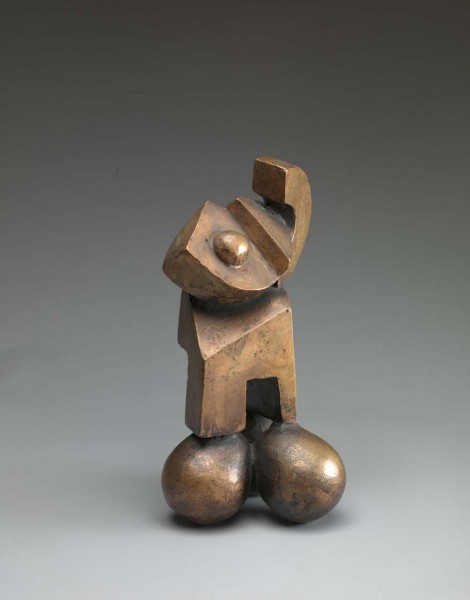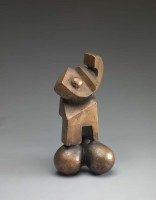
The Opposite
| Author: |
Elena Kepalas (1920–2006) |
| Created: | 1950s |
| Material: | bronze |
| Dimensions: | 28 × 16.50 cm |
Elena Kepalas (1920–2006) began her career as a professional ballerina, initially moving to Germany after the war, and later settling in Australia. She subsequently made her home in Toronto in Canada, where she studied sculpture at the Ontario College of Art. In 1961 she relocated to New York, where she honed her skills in bronze casting at the Brooklyn Museum Art School. The art researcher Elona Lubytė employs Algirdas Julius Greimas’ concept of ‘the noble style’ to describe the artistic approach of Kepalas and other émigré artists of her generation. He characterised ‘the noble style’ as a ‘refusal to commit’,* embraced by artists for whom individual self-expression reigns supreme. Kepalas once claimed that dancing served as a bridge to the world of sculpture. Her body of work is marked by generalised forms and the quest to discover the most concise visual language to convey ideas. The influence of Cubism is discernible in her formal language. During her time in New York, she had the opportunity to interact with Jacques Lipchitz, a prominent Cubist sculptor, who provided guidance and feedback on her first works. The bronze sculpture The Opposite presents an abstracted human figure, apparently constructed from disparate parts. However, as the title suggests, it serves more as a study in the juxtaposition of angular and sleek abstract forms.
Text author Jurgita Ludavičienė
* Išeivijos dailė. Vilnius, 2003, p. 196.
Source: Law firm Valiunas Ellex art album THE ART OF MATERIALS. Compiler and text author Jurgita LudavičienėExpositions: "Free and Unfree. Lithuanian Art between 1945 and 1990", 9 September 2021 – 30 April 2022, Lithuanian Art Centre TARTLE (Užupio St. 40, Vilnius). Curators Dovilė Barcytė and Ieva Burbaitė.







